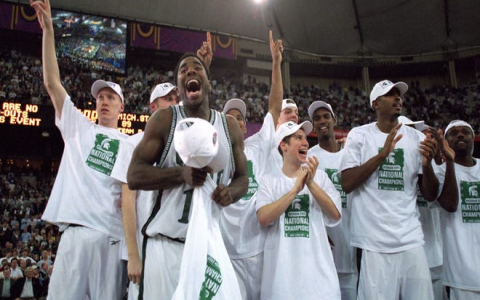In 1989, the Michigan Wolverines men’s basketball team captured the national championship in a thrilling run that concluded with a decisive victory over Seton Hall. This season marked a pivotal moment in collegiate basketball, showcasing the talents of a roster filled with future NBA stars and passionate players. The blend of skill, strategy, and raw determination transformed a talented team into champions, forever etching their names in college basketball history.
The Wolverines, led by coach Steve Fisher, entered the tournament as a formidable force. Among their key players was Glen Rice, who played a crucial role throughout the season. Rice averaged over 30 points per game in the NCAA tournament, demonstrating his ability to perform under pressure. His remarkable shooting and scoring ability were not just numbers; they turned the tide in critical games, making him an indispensable asset for the Wolverines.
Additionally, Rumeal Robinson emerged as a key playmaker. His skills weren’t limited to shooting; he was remarkable in facilitating plays and providing leadership on the court. His clutch free throws in the championship game exemplified his nerves of steel. As Robinson recalled, “In those moments, it was about trusting my training and my teammates.” This mental resilience paid off, particularly in the high-stakes moments of the tournament.
Moreover, we cannot overlook Jalen Rose, a prominent figure in the Wolverines’ lineup. Rose’s versatility allowed him to play multiple positions effectively. He was instrumental in creating scoring opportunities and providing defensive support. The synergy among the players was palpable, as Rose noted, “We worked continuously to perfect our chemistry.” This element was vital not only in their path to the title but also in solidifying their legacy as one of college basketball’s great teams.
The Michigan team also boasted Chris Webber, a player whose combination of size and skill revolutionized the forward position. Webber’s capability to dominate the court was evident through his exceptional passing ability and rebounding skills. He led the team with poise, a quality recognized by many. Fisher once commented, “Chris was the complete package. He had this rare ability to read the game and adjust accordingly.” This intelligence on the court set him apart as one of Michigan’s standout stars.
However, it was not just individual talent that propelled the Wolverines. Coach Steve Fisher’s strategic acumen played a significant role. Fisher’s ability to adjust tactics according to opponents was crucial. For instance, during the championship game, Michigan’s defense stifled Seton Hall’s key players, limiting their scoring opportunities. This strategy showcased Fisher’s deep understanding of the game and his players’ strengths.
In considering the legacy of the 1989 Michigan Wolverines, their performance reflected broader trends in college basketball at the time. The emergence of athletic, versatile players offered a glimpse into the future of the game. Teams were moving away from traditional roles, favoring a more dynamic approach that emphasized spacing, ball movement, and shooting. This evolution changed how teams built their rosters fundamentally.
As we reflect on this standout season, the emotions ran high for everyone involved. The jubilation of winning a championship merged with the memories of hard work and sacrifice. In the words of Rice, “Winning was validation. Every drop of sweat, every early morning practice led us here.” This sentiment resonated with the entire team, as they cherished their achievement together.
In retrospect, what do you think was the most pivotal moment for the 1989 Michigan Wolverines during their championship run? Was it Rice’s scoring surge, Robinson’s clutch plays, or perhaps a tactical decision by Fisher that turned the tide? Feel free to share your thoughts below!















